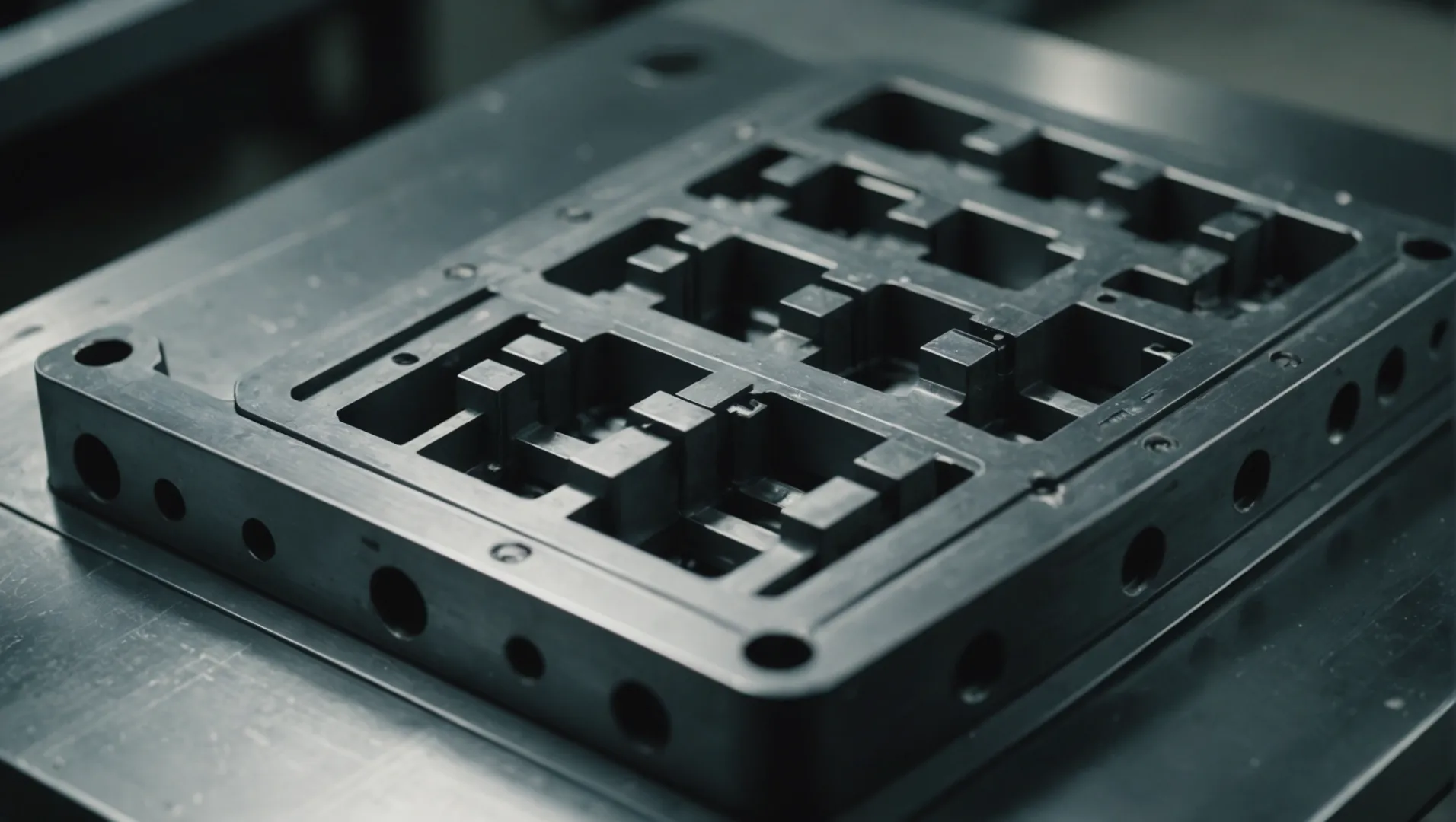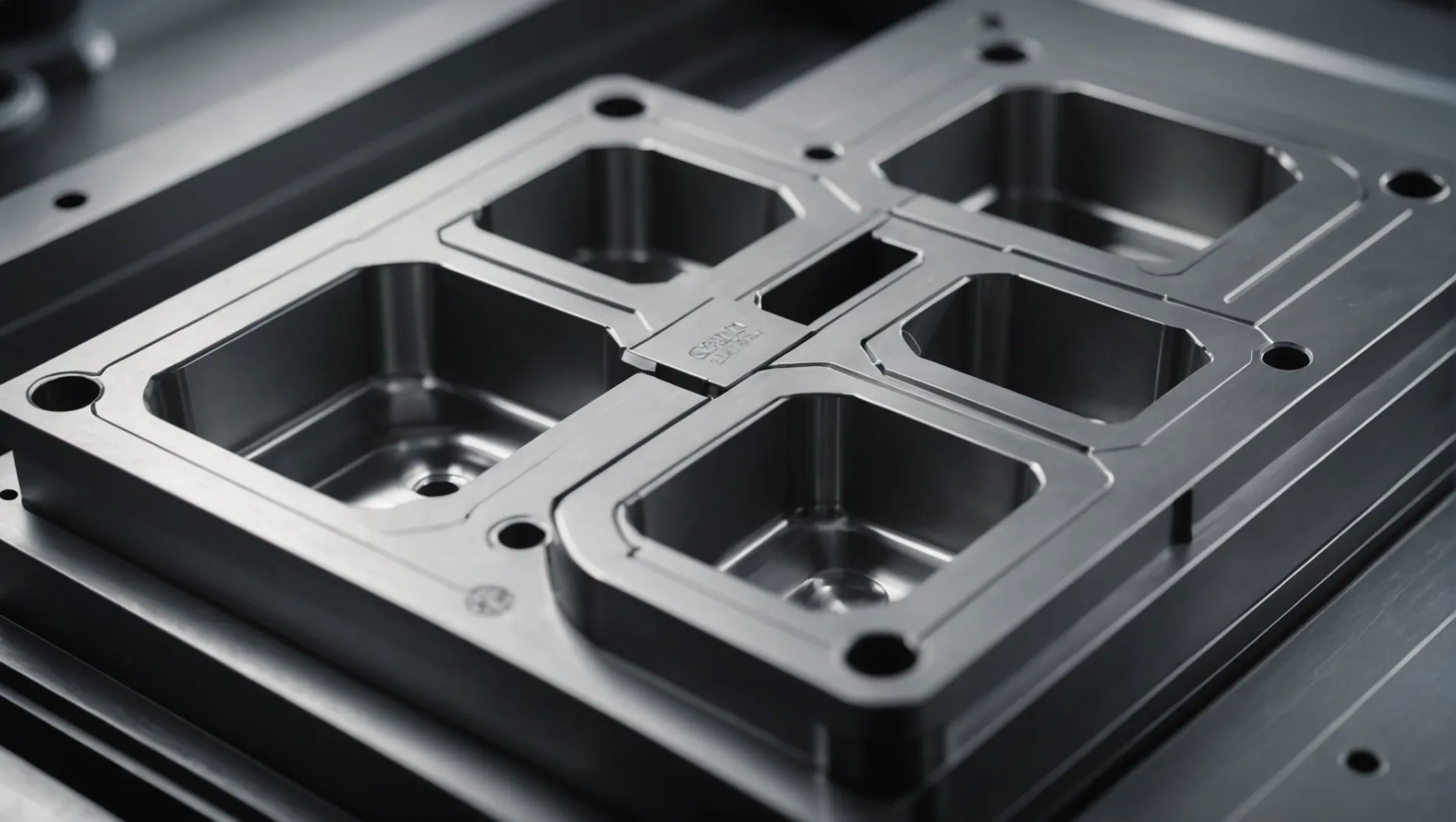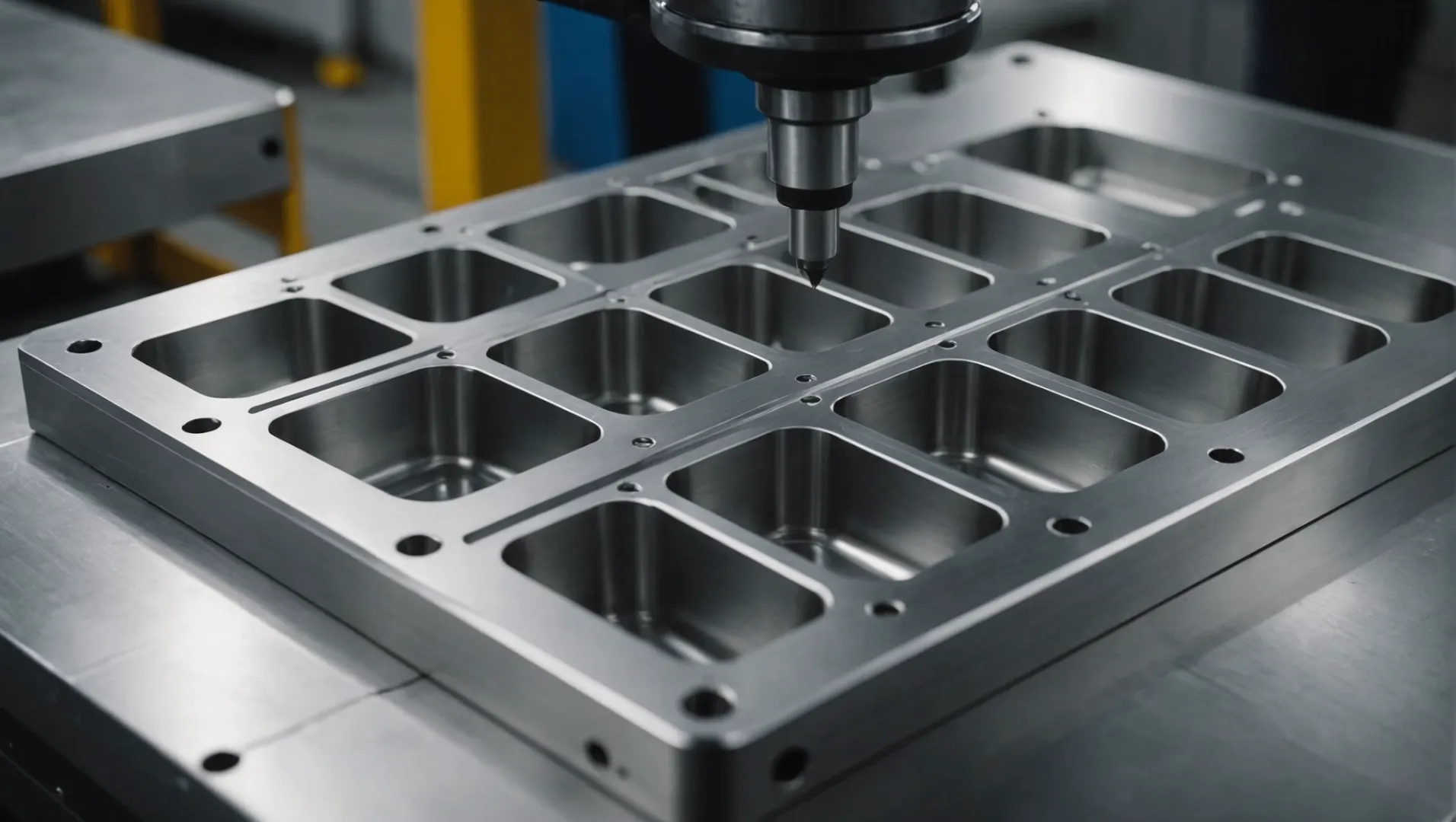
In the ever-evolving world of manufacturing, injection mold coatings are like the unsung heroes of production. They enhance efficiency while ensuring product quality, making a world of difference.
Injection mold coatings provide improved wear and corrosion resistance, better demoulding performance, and enhanced product surface quality, making them indispensable in modern manufacturing processes.
But wait, there’s more! The true depth of advantages offered by injection mold coatings unfolds as we dive deeper into how they influence every facet of manufacturing—from maintenance routines to precision engineering.
Mold coatings improve demoulding performance by reducing friction.True
Coatings like PTFE reduce adhesion and friction, aiding smooth demoulding.
How Do Injection Mold Coatings Improve Wear Resistance?
Injection mold coatings are essential for extending the lifespan of molds by improving their wear resistance against abrasive materials.
Injection mold coatings, like PVD coatings, significantly enhance wear resistance by forming a hard, protective layer on the mold surface. This layer minimizes damage from abrasive materials, prolonging mold life.

The Mechanics of Wear Resistance in Injection Molds
Injection molds are subjected to constant abrasion due to the repetitive contact with raw materials. This abrasion is more pronounced when handling abrasive materials such as glass fibers or engineering plastics. Over time, this wear can lead to scratches and deterioration of the mold surface.
Coatings like those applied through physical vapor deposition1 (PVD), such as titanium nitride or tungsten carbide, provide a hard, durable surface layer that significantly reduces wear and tear. These materials offer high hardness and excellent adhesion properties, forming a protective barrier that absorbs the frictional forces during the molding process.
Real-World Applications of Mold Coatings
Consider a manufacturer producing automotive components with complex designs that use fiber-reinforced polymers. Here, the mold’s wear resistance is critical. By applying a PVD coating of tungsten carbide, the manufacturer can ensure a longer mold life with fewer disruptions due to maintenance.
Moreover, molds that incorporate coatings can maintain their precision and dimensional stability over time. This means less frequent recalibration and adjustment, which translates into cost savings and improved efficiency.
Comparative Analysis: Coated vs. Uncoated Molds
To truly understand the benefits, consider the following comparison table:
| Feature | Coated Mold | Uncoated Mold |
|---|---|---|
| Wear Resistance | High | Moderate to Low |
| Maintenance Frequency | Reduced | Frequent |
| Surface Finish Quality | Enhanced | Variable |
| Lifespan | Extended | Shorter |
The advantages of using coated molds become evident in environments where precision and reliability are paramount. The integration of coatings not only protects the molds but also enhances overall production quality and efficiency.
For more insights into how specific coatings can benefit different manufacturing processes, explore the latest research in material science2.
PVD coatings enhance mold wear resistance.True
PVD coatings create a hard, protective layer on molds, reducing wear.
Uncoated molds have higher wear resistance.False
Uncoated molds lack the protective layer that reduces abrasion damage.
What Role Does Corrosion Resistance Play in Mold Longevity?
Corrosion resistance is a critical factor in prolonging the life of injection molds, ensuring efficiency and precision.
Corrosion resistance in injection molds protects against chemical damage, maintaining mold integrity and precision, and extending its service life.

Understanding Corrosion in Injection Molds
Corrosion is the gradual degradation of materials due to chemical reactions with their environment. In injection molding, molds are often exposed to aggressive substances released by plastic raw materials. For instance, polyvinyl chloride can release chlorine, leading to acidic conditions that corrode unprotected mold surfaces. This chemical assault can compromise the mold’s structural integrity, leading to dimensional inaccuracies and reduced lifespan.
The Protective Role of Coatings
Coatings serve as a defensive barrier, shielding molds from corrosive elements. Materials like titanium nitride or tungsten carbide are commonly used due to their exceptional hardness and resistance properties. These coatings not only prevent direct contact between corrosive agents and the mold substrate but also help maintain the precision and dimensional stability of the mold over time. Enhanced corrosion resistance3 ensures that molds remain efficient and reliable through numerous production cycles.
Comparing Corrosion Resistance Coatings
Here’s a table comparing different coating materials commonly used for corrosion resistance:
| Coating Material | Benefits | Application Suitability |
|---|---|---|
| Titanium Nitride | High hardness, corrosion resistance | Engineering plastics, high-wear scenarios |
| Tungsten Carbide | Excellent wear and corrosion resistance | Glass fiber materials |
| Chrome Plating | Good wear resistance, cost-effective | General-purpose applications |
These coatings are selected based on specific production needs, balancing cost with the desired level of protection and performance.
Corrosion Resistance and Maintenance
By reducing corrosion, maintenance frequency and costs are significantly lowered. Molds with high corrosion resistance require less frequent intervention, ensuring smoother production runs. This reduction in maintenance needs also helps in minimizing downtime, which is crucial for high-volume manufacturing environments.
Furthermore, maintaining mold accuracy through effective corrosion resistance translates to better product quality. This means fewer defective products and greater consistency across production batches. Injection mold coatings4 ultimately ensure that manufacturers can meet stringent quality standards while also optimizing operational efficiency.
Corrosion resistance extends mold lifespan.True
Corrosion resistance protects molds from chemical damage, prolonging life.
Titanium nitride is ineffective against corrosion.False
Titanium nitride is highly effective due to its hardness and resistance.
How Do Coatings Enhance Demoulding Performance?
Coatings revolutionize demoulding by reducing friction and enhancing product quality during injection molding.
Coatings on molds enhance demoulding by minimizing adhesion, reducing friction, and eliminating the need for demoulding agents, thus improving efficiency and product quality.

The Science Behind Enhanced Demoulding
Injection mold coatings primarily enhance demoulding performance by minimizing the adhesion between the mold surface and the plastic product. This reduction in adhesion makes it significantly easier for the product to be released from the mold, reducing the force required during the demoulding process.
Coatings such as PTFE (polytetrafluoroethylene) or DLC (diamond-like carbon) are particularly effective in reducing friction, which is crucial in ensuring a smoother demoulding process. By lowering the friction coefficient, these coatings facilitate a seamless separation of the molded product from the mold, thereby preventing damage to both the mold and the product.
Economic and Operational Benefits
The application of mold coatings can lead to substantial economic benefits by reducing dependency on demoulding agents. In traditional settings, demoulding agents are applied to ensure smooth release; however, they can leave residues that compromise the surface quality of products. By employing coatings, manufacturers can potentially eliminate or reduce the use of these agents, thereby cutting costs and simplifying post-production cleaning processes.
Additionally, these coatings contribute to operational efficiency by accelerating production cycles. Faster demoulding translates to shorter cycle times, allowing for increased throughput and higher productivity levels.
Coatings in Action: Real-World Examples
Consider the automotive industry, where high precision and superior surface finish are paramount. In this sector, coatings like chromium nitride are employed to ensure that components such as dashboards or interior trims are released without imperfections.
Similarly, in electronics manufacturing, where intricate designs and minute details are standard, coatings ensure that products maintain their structural integrity upon release. This reduces the occurrence of defects like warping or deformation, which can arise from improper demoulding.
To explore more about how these coatings operate in different industries, check out resources like coating applications in manufacturing5 for detailed insights.
Future Trends in Mold Coatings
As technology evolves, so do the methods of improving demoulding performance. Emerging materials and advanced application techniques continue to push the boundaries of what coatings can achieve. Innovations such as nanocoatings offer promising enhancements in terms of both performance and environmental impact.
In summary, mold coatings significantly enhance demoulding performance by reducing friction and adhesion. They offer notable economic advantages by decreasing reliance on additional agents and improving operational efficiency across various industries.
Coatings reduce friction in demoulding processes.True
Coatings like PTFE lower friction, aiding smoother product release.
Demoulding agents are essential with coated molds.False
Coatings reduce or eliminate the need for demoulding agents.
Why Is Surface Quality Crucial in Injection Molding?
In injection molding, the surface quality of molds significantly influences the final product’s appearance and functionality.
Surface quality in injection molding affects product aesthetics, performance, and durability by minimizing defects and ensuring precise dimensions.

The Impact of Surface Quality on Product Aesthetics
A high-quality surface finish in injection molds directly translates into visually appealing products. Smooth, flawless surfaces reduce visible defects such as blemishes and scratches, crucial for consumer-facing products like electronic housings and automotive parts. These products often demand stringent aesthetic standards, which can only be achieved through precise mold surface finishes.
Enhancing Product Performance Through Surface Quality
Beyond aesthetics, surface quality plays a critical role in the functionality of molded products6. For instance, optical components require molds with exceptional smoothness to ensure clarity and precision in light transmission. Similarly, surfaces with low friction can enhance the performance of moving parts by reducing wear and tear during operation.
Influence on Product Durability
Mold surface quality also impacts the durability of the final product. Poor surface finishes can introduce micro-defects and stress points in the molded part, leading to premature failure. By maintaining a high-quality surface finish, manufacturers can produce parts with improved strength and longevity.
Precision and Dimensional Stability
Accurate surface quality ensures that the molded product meets its design specifications, vital for maintaining dimensional stability and consistency across production runs. Variations in surface finish can lead to dimensional inaccuracies, causing issues in assembly or operation.
Cost Implications of Surface Quality
Investing in high-quality mold surfaces can reduce overall costs by decreasing scrap rates and the need for post-processing. It also enhances the mold’s lifespan, reducing the frequency of repairs and replacements. Moreover, better surface quality often leads to faster cycle times as materials flow more easily within the mold cavity.
In conclusion, maintaining optimal surface quality in injection molding is not merely about aesthetics; it is integral to ensuring product performance, durability, precision, and cost-effectiveness.
Surface quality affects injection molding aesthetics.True
A high-quality surface finish ensures visually appealing products.
Poor surface finishes enhance product durability.False
Poor finishes introduce defects, reducing product strength and longevity.
Conclusion
In summary, injection mold coatings are vital for enhancing longevity, efficiency, and product quality. Embrace these options to optimize your manufacturing processes.
-
Learn how PVD enhances material surfaces with durable coatings.: PVD is used in the manufacturing of items which require thin films for optical, mechanical, electrical, acoustic or chemical functions. Examples include … ↩
-
Discover cutting-edge advancements in coating technologies for manufacturing.: A new UltraPLAS coating developed by Fraunhofer researchers has proven to be an innovative solution to the challenges of primary forming processes. ↩
-
Discover how these coatings protect molds from chemical damage.: A thin coating of hard nickel plating will give excellent corrosion protection and can be applied to most tool steels including, P20, H13 and 4140. One of the … ↩
-
Learn why coatings are vital for maintaining mold precision.: Not only is plastic injection molding simpler and more reliable, it is also extremely efficient. You should have no doubts about using this method to … ↩
-
Learn how different coatings enhance manufacturing processes.: Discover the benefits and tradeoffs of four of the most common industrial coating types: Epoxies, polyurethanes, polysiloxanes and zinc-rich primers. ↩
-
Explore how surface quality impacts product performance and efficiency.: This paper presents a comprehensive overview of injection molding for high surface quality based on the optical aspect of surface quality and defects. ↩






